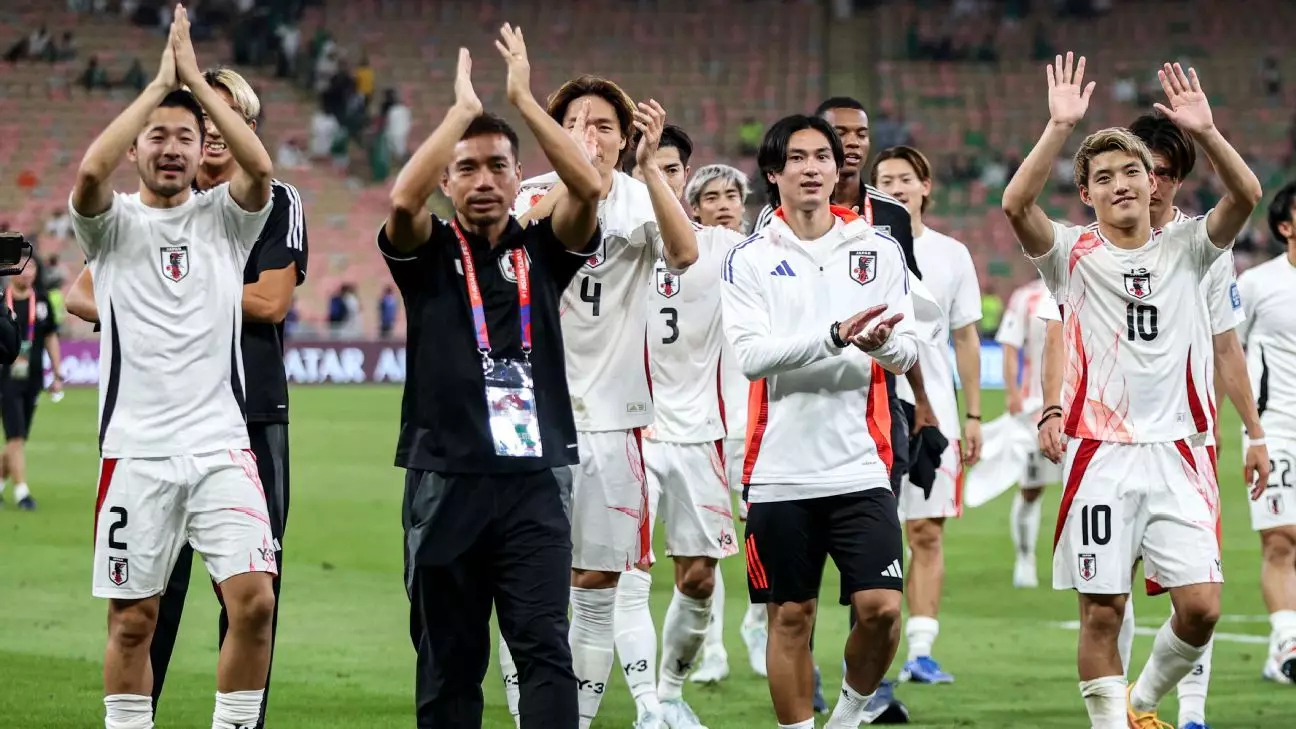In the world of football, extended tenures for national team coaches have become increasingly rare, reflecting the high stakes and pressures associated with international competitions. Among the few exceptions is Hajime Moriyasu, who has been steering Japan’s national football team since 2018. In the current landscape, where only seven of the 32 coaches from the last FIFA World Cup remain in their roles, Moriyasu’s longevity is a testament to his adaptability and resilience. As Japan gears up for another critical qualifier, it’s essential to scrutinize how Moriyasu’s leadership has positioned the Samurai Blue on an upward trajectory.
Moriyasu took over the reins after Japan’s underwhelming performance in the 2018 World Cup, where they exited in the round of 16. Initially, his path was fraught with difficulties, and whispers of his potential dismissal circulated during the qualification rounds for the 2022 World Cup. However, a pivotal 2-0 win against Australia not only secured Japan’s World Cup berth but also reaffirmed Moriyasu’s capability to navigate challenging waters. Now, as he prepares to face Australia again, he does so leading the most formidable side in Asia, bolstered by a string of impressive performances.
Japan has achieved perfection in the Asian qualifiers, not just in results but in style. Throughout the qualification phases, the Samurai Blue scored 35 goals without conceding a single one in their first six games. This stark contrast to their earlier defensive tactics highlights the evolution of Japanese football under Moriyasu. His emphasis on offensive play has transformed Japan into a more dynamic and entertaining team, shedding the reputation of being solely defensive.
The influx of talent has rejuvenated the national team. Many key players are part of what is now affectionately termed the “Tokyo Olympics Generation.” These athletes, having gained invaluable experience during Japan’s hosting of the Olympics, are now stepping into central roles as the older generation begins to age out. This includes players like Daichi Kamada, Takefusa Kubo, and Wataru Endo, who are crucial not only for their club performances but also for their leadership on the national stage.
Furthermore, the presence of 37 players situated across top European leagues underscores the growing depth of the team. This international exposure has refined their skills and allowed for a competitive environment that benefits the national squad. The absence of well-known defenders like Takehiro Tomiyasu and Hiroki Ito due to injuries only highlights the rich pool of talent available for Moriyasu to draw from as they recover.
The Path Forward: Japan’s Vision for Future Success
In an ambitious push towards winning the FIFA World Cup by 2050, the Japan Football Association (JFA) laid out “Japan’s Way,” a comprehensive framework aimed at nurturing football culture. This philosophy stresses not only technical and physical growth but also the importance of enhancing the national league, the J1 League, to transform it into a breeding ground for future stars.
Moreover, the JFA aims to create an ecosystem that connects all layers of football in Japan, from grassroots to professional levels. They aspire to cultivate an environment where everyone enjoys and engages with football, creating a sustainable culture that supports excellence on the international stage.
Upcoming Challenges: Maintaining Momentum and Intensity
Although Japan appears well-positioned for upcoming bouts against top Asian teams, the ghosts of past defeats linger. Their two losses in the previous Asian Cup have raised questions about the team’s ability to sustain their impressive form in high-stakes scenarios. As Moriyasu’s side faces Australia, those shadows will return, bringing with them a need for both resilience and tactical execution.
The rivalry between Japan and Australia has characterized Asian football for decades. Historically, Australia has found it challenging to claim victory on Japanese soil, and Moriyasu’s current squad will likely be the favorites. However, Australia now stands under the leadership of coach Tony Popovic, known for his capability to engineer surprising results. While Japan aims to assert their dominance, one cannot underestimate the potential for unexpected developments in such closely contested rivalries.
As Japan continues its journey under Hajime Moriyasu, there’s palpable excitement surrounding the international footballing community regarding the future of the Samurai Blue. They are revitalizing their identity, transitioning into the next generation of players who possess both skill and determination. Japan’s evolving philosophy, focused on integrating a broader football culture with competitive success, may well see them break the long-standing dominance of European and South American teams on the world stage. With a significant upcoming clash against Australia, Moriyasu’s leadership will be put to the test once again, providing a glimpse into Japan’s prospects in the continued development of their football narrative.

